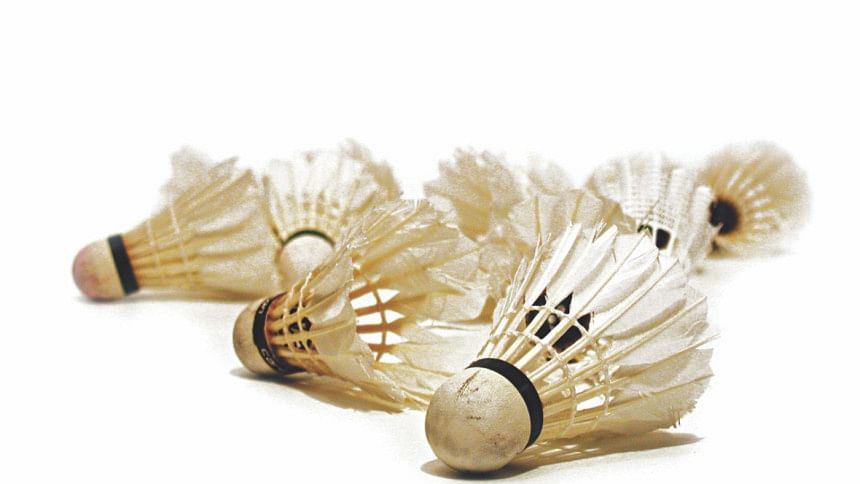Badminton 101

Like the Starks predicted, winter has come, and with it the legalisation for kids to stay outside till midnight. If you're missing out on all the fun or want to brag to your less informed friends, this article is here to do a Jaime (lend a hand).
First, note that international and local rules differ quite a bit. For example, internationally, the winner is decided by a best of three matches, consisting of games with a winning point of 21, while the local one consists of only one gameof 15 or 21 points. Also, the local singles and doubles have varied rules. The differences are clarified as much as possible.
THE COURT
The court is divided by the net into two sides. Each side consists of three sectors: the first, second and third court. The second court, aka the service court, is divided into two parts: left and right. During serve, team members stay at opposite parts of the service court. Courts are exchanged between the oppositions when the leading score hits midpoint.
Serving Position
Singles: The server's serving position is decided by his point. He'll serve from the right side of the service court if his point is even, left if odd.The receiver's position in the court is not dictated by his own point. He is positioned diagonally from the server.
Doubles: The team member on the right side always serves.
THE SERVE
International rules require tossing a coin to decide which side serves first. You serve diagonallyto the opposite side'sservicecourt (left from right, right from left). A serve is dismissed if the shuttlecock falls outside the service court or you serve from the wrong side of your service court. You serve again if the cork falls on the line surrounding opponent's service court or it gets blocked by the net.
Singles: A player gets to serve until he loses one rally.
Doubles: A team gets to serve until that side loses two rallies. The second man serves after one rally loss.
International: A side gets to serve until one rally is lost.
THE RALLY
A rally's duration is from a serve until a wrong move from any side.
Singles: Whoever wins the rally gets the next serve. But point is only awarded to the server.
Doubles: If the server side wins the rally, they get a point and exchange positions in the service court while the receivers stay put.If they lose, the next serve goes to the second man if the first man was serving, oppositions if not. Again, the receivers get no point even if they win the rally.
International: Whoever wins the rally gets both the service and a point.
DEUCE
Local: Deuce occurs when both sides lose a rally stuck at one point less than the winning point (at a score line of 14-14 if it's a 15 point game). After this, the winning point is increased by two (17 from 15). The rule of deuce remains after every iteration.
International: The rule here is that a side has to win with a minimum of 2 points deficit. So 21-20 is not a legal winning score. If such score occurs, the game continues until one side gets 2 points higher than the opponent.
TERMINOLOGIES
Wrong: A condition for ending a rally – the cork falls outside the court or on the player's own side; or if a player fails to play a legal shot.
Fight: Server side decider – usually playing a rally without concerning court rules and the side winning it getting the serve.
First Man: The player on the right after winning service rights. He starts the serve.
Second Man: Teammate of the first man.

 For all latest news, follow The Daily Star's Google News channel.
For all latest news, follow The Daily Star's Google News channel. 



Comments